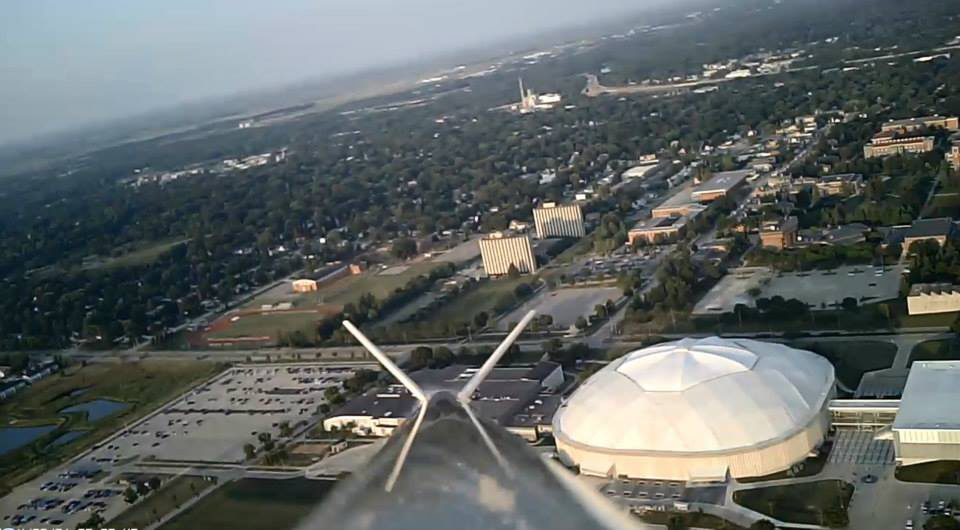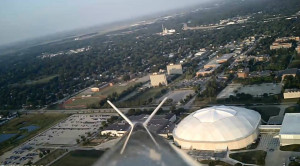Rocket club puts recent creation to the test in U of I wind tunnel

By: Dino Odobasic
The CFHS rocket club journeyed to the University of Iowa Hydraulics Wind Tunnel in Iowa City on Sunday, March 1,to put its rocket to the test.
Club adviser and engineering teacher Zeb Nicholson took three other students out to the wind tunnel with a custom made stand that they had built by themselves, to find out the coefficient of drag for their rocket.
“Our team used the wind tunnel to run some preliminary tests on our rocket,” Nicholson said. The rocket they built was made entirely on computer software and then translated physically into the construction.
“Some parts were even designed and printed using the high school’s 3D printer,” he said.
Basically, what their plan was for the rocket was to set up the rocket in the wind tunnel so that the front of the rocket was facing toward the 60 mph wind, and then a sensor on the back of the rocket would tell them how much force was being applied to the rocket by the wind.
Now that they have collected all the data from the wind tunnel test, they can use that information by putting it into the simulation software that will tell them just how high the rocket will travel.
“We used the force to find the coefficient of drag,” Nicholson said.
Junior student Jason Rathjen was one of the three students that went with Nicholson to the wind tunnel. “It was a really cool experience. We got a tour of the whole hydraulics lab at the U of I. We went down there to determine the coefficient of drag for our rocket and came away with some really good numbers,” Rathjen said.
Nicholson echoed Rathjen’s sentiments and added another reason why it was worth the trip for the students. “This was an amazing experience and every student who went took away many exciting memories,” Nicholson said.
For the rocket team members, the goal was not to use the wind tunnel to see how high they can get their rocket to fly. Instead, they are aiming to get their rocket to reach as close as they can to 800 feet because they will be entering a contest that requires each rocket entered to attempt to safely fly a raw egg to 800 feet exactly — no higher and no lower — without breaking or cracking the egg. If the egg is cracked or broken, the team is disqualified.
The flight to 800 feet should be around 46-48 seconds. With every second out of this two second window, entrants will receive four points, and for every foot they are off from 800 feet, they will receive one point. The team that receives the fewest points wins the contest.
“I think we have a really good shot at getting the fewest amount of points and winning this competition,” Nicholson said.
When they had made all their adjustments to the rocket, they went to the soccer fields behind the UNI Dome to test out the rocket with the team.
“The rocket reached about 1,000 feet, so we will be adding some more weight on it to reduce that height,” Nicholson said.










You must be logged in to post a comment Login